Long-awaited 3D-printed stainless steel bridge opens in Amsterdam

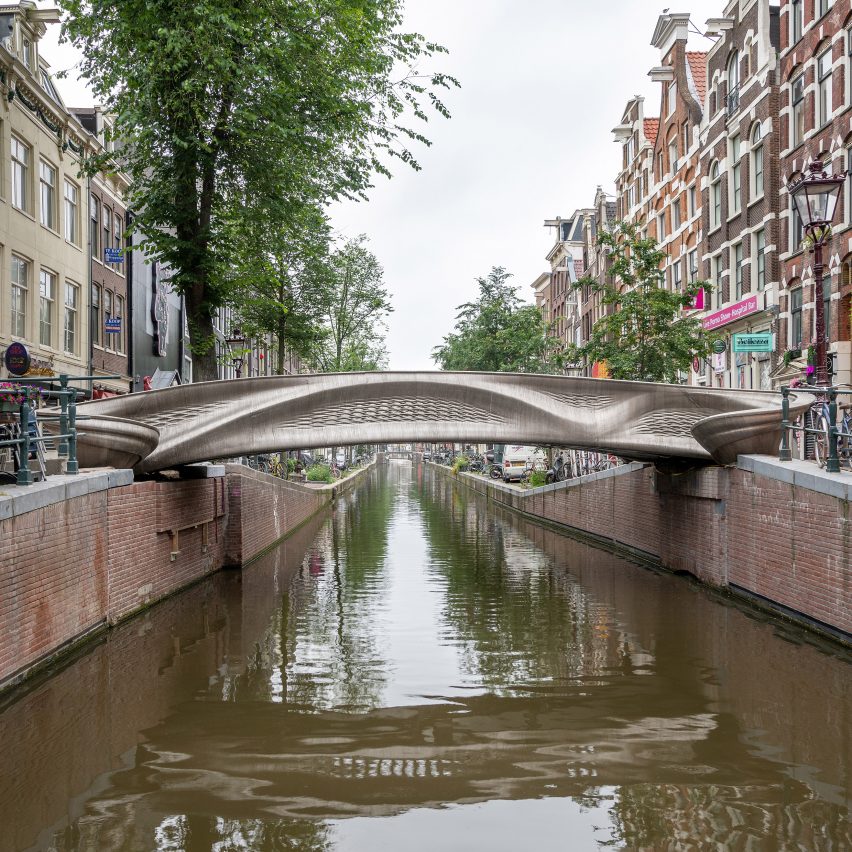
A 12-metre-long 3D-printed pedestrian bridge built by Dutch robotics company MX3D has opened in Amsterdam six years after the project was launched.
The bridge, which was 3D-printed from stainless steel, spans the Oudezijds Achterburgwal in Amsterdam's Red Light District.
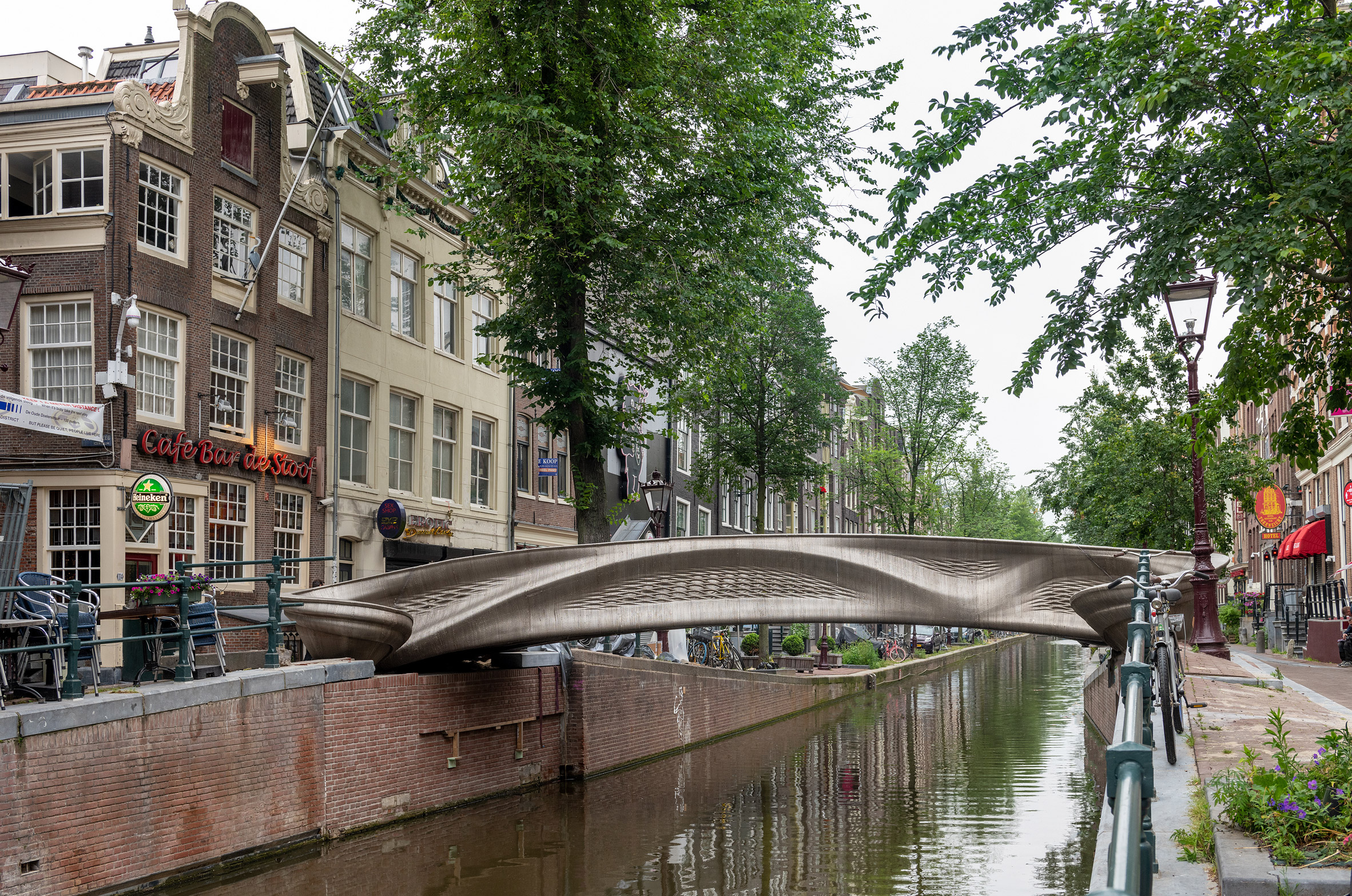 Top: MX3D Bridge is located in the Red Light District. Above: it was 3D printed from stainless steel
Top: MX3D Bridge is located in the Red Light District. Above: it was 3D printed from stainless steel
Named MX3D Bridge, it was designed by Joris Laarman Lab in collaboration with MX3D and engineering firm Arup.
The structure was 3D printed from 4,500 kilograms of stainless steel by four robots over a period of six months in a factory before been installed over the canal this year.
Its curving S-shaped form and balustrades cut with lattice-style perforations were created using parametric modelling software.
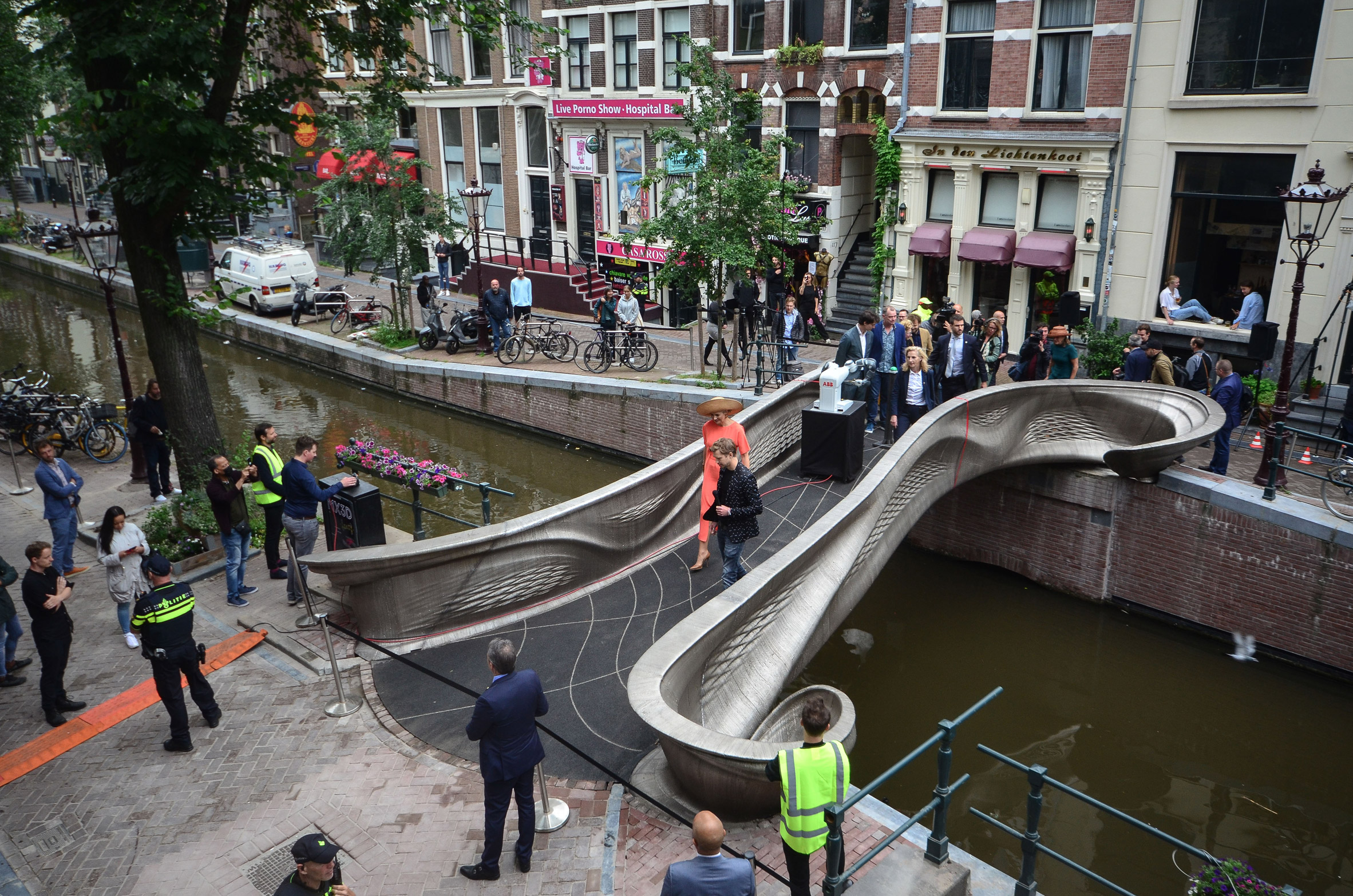 The bridge was constructed using robotic printers. Photo is by Adriaan de Groot
The bridge was constructed using robotic printers. Photo is by Adriaan de Groot
"This robotic technology finally allows larger optimized designs to be 3D printed in metal," said MX3D co-founder Gijs van der Velden.
"This causes significant weight reduction and reduced impact for parts manufactured in the tooling, oil and gas and construction industries."
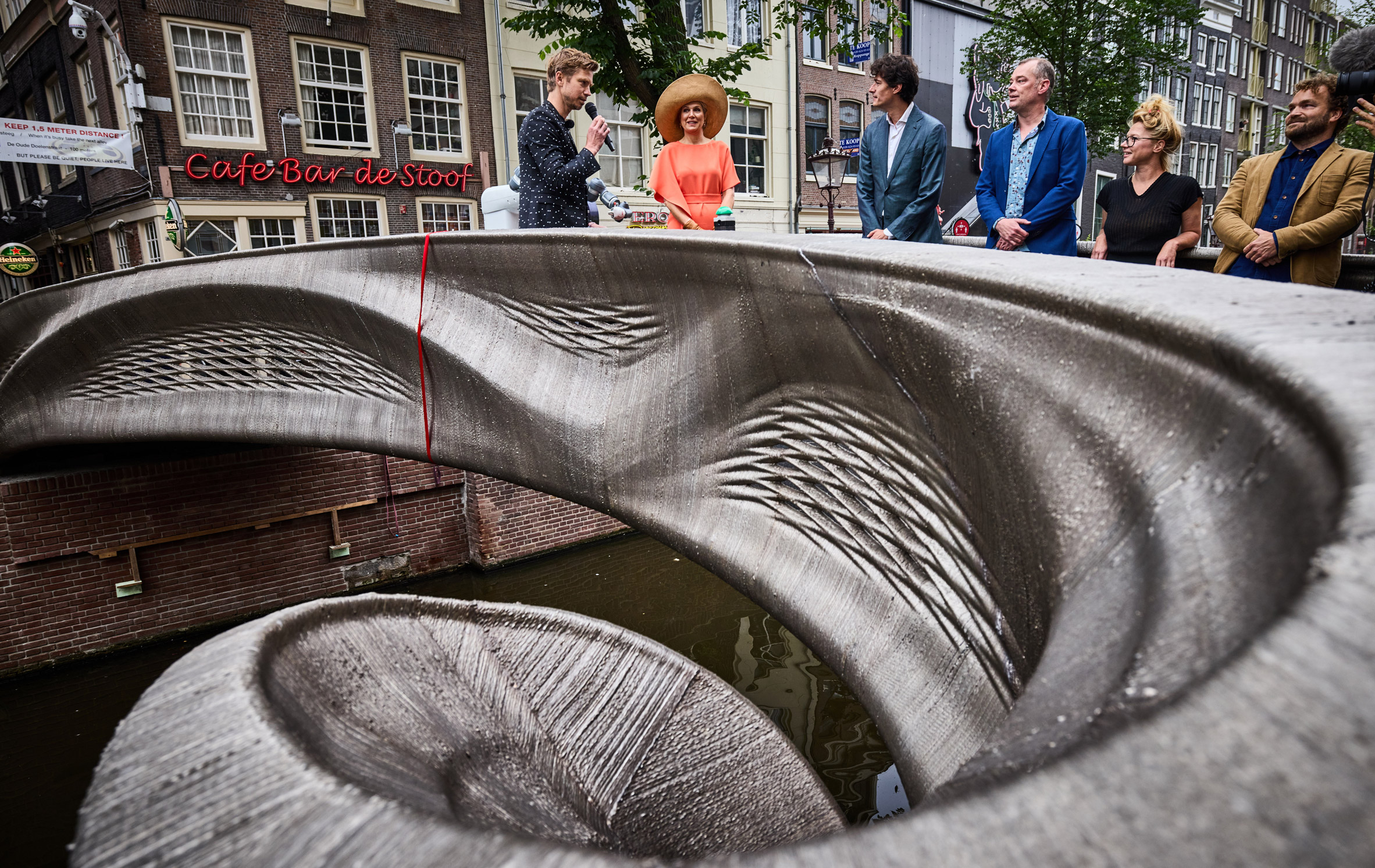 It has perforated balustrades. Photo is by Jande Groen
It has perforated balustrades. Photo is by Jande Groen
The creators of the bridge hope that it will demonstrate how 3D printing can be used to make structures that require less material.
"The industry is facing a huge challenge in becoming carbon neutral in 2050," said Arup structural engineer Stijn Joosten.
"By stepping up our game and the will to make a change as designers and engineers, we can bring the necessary innovation to make a difference in tomorrow's built environment."
However, architect Philip Oldfield calculated that the stainless-steel structure has an embodied carbon of 27.7 tonnes from its material use alone.
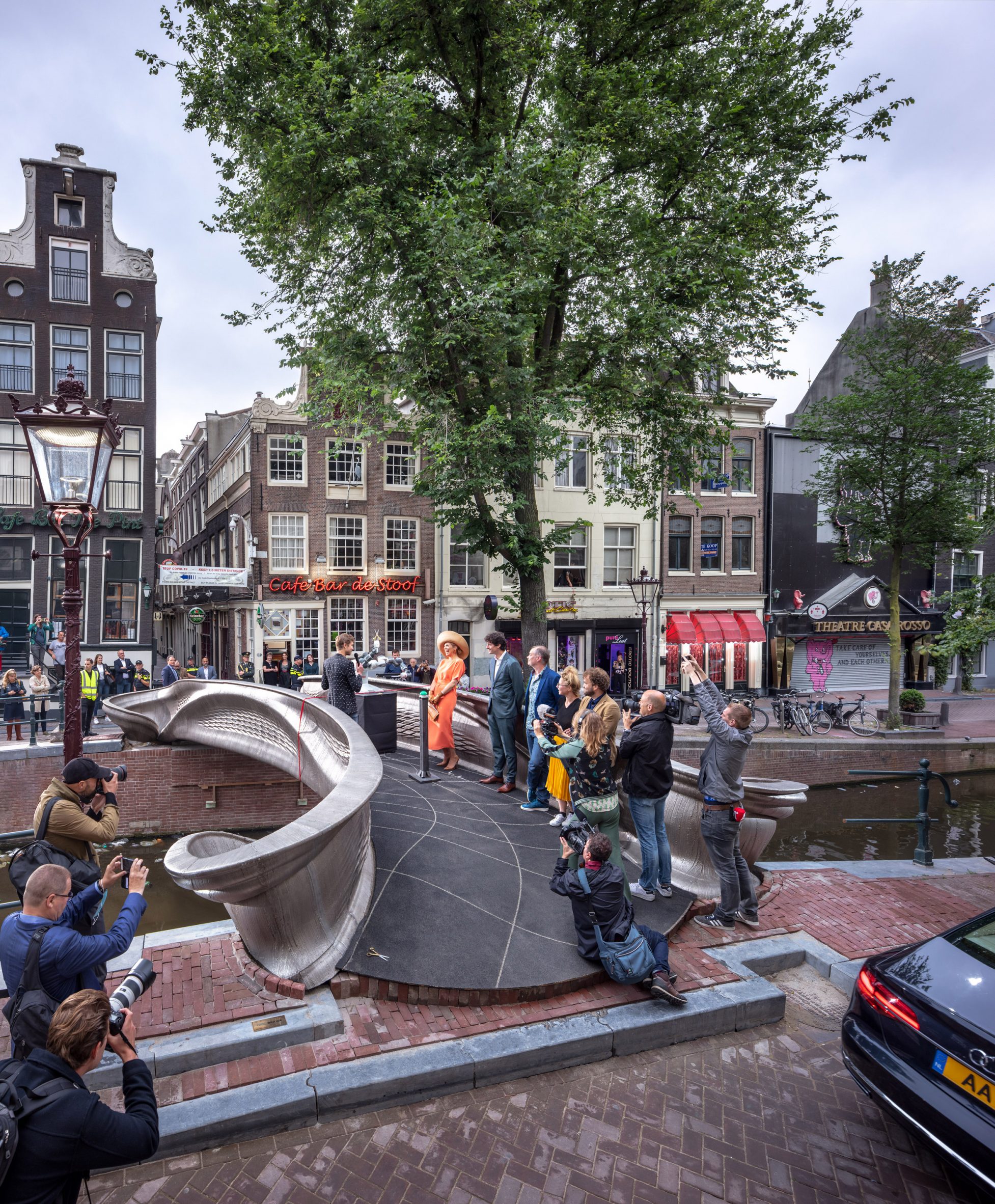 The bridge was fitted with sensors. Photo is by Thijs Wolzak
The bridge was fitted with sensors. Photo is by Thijs Wolzak
The Alan Turing Institute and Arup fitted the structure with a network of sensors that allows the bridge to collect data and build a digital twin to keep track of its performance and health.
The digital twin will monitor corrosion, load changes, environmental conditions and pedestrian use in efforts to further data-centric design.
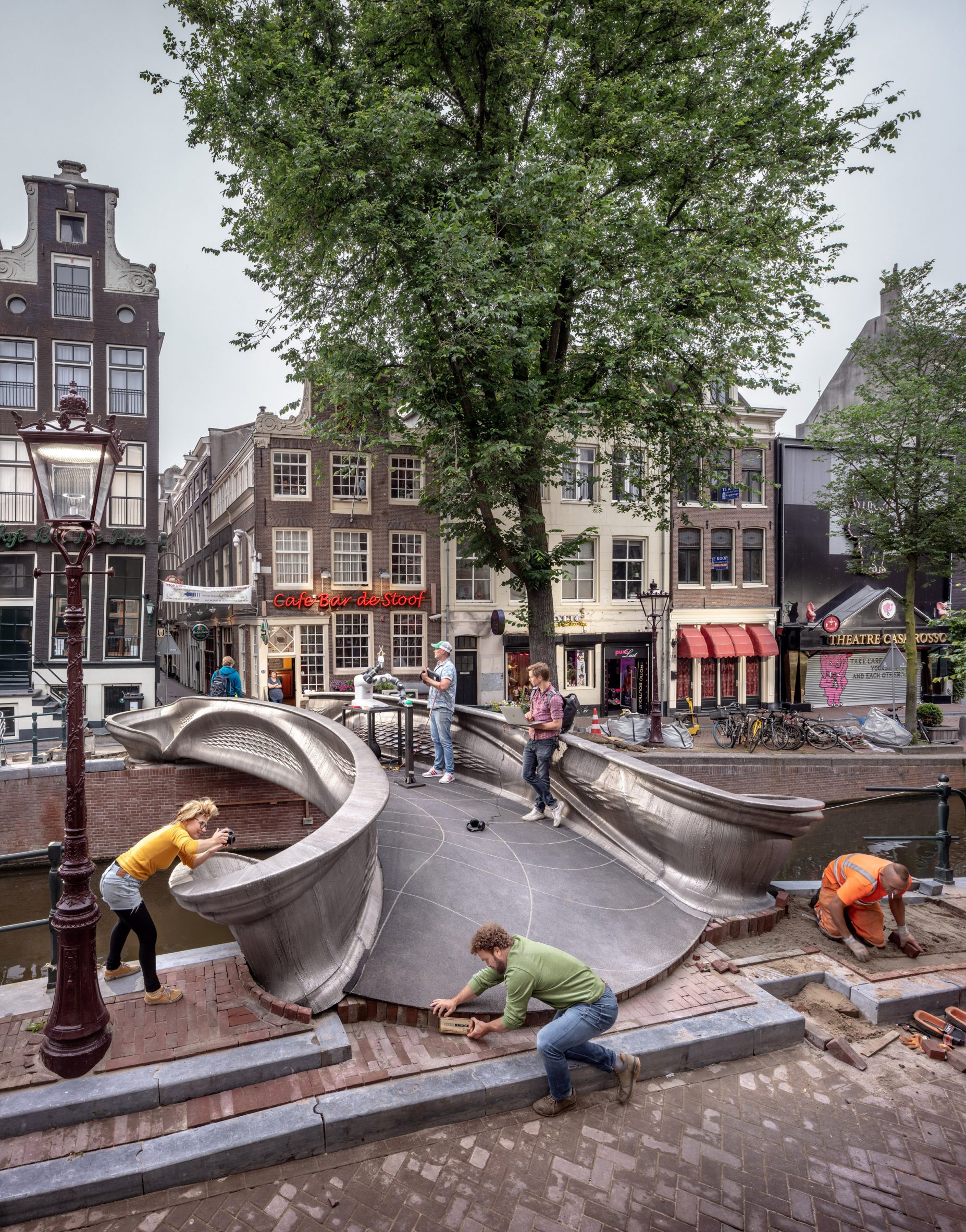 It was made from 4,500 kilograms of stainless steel. Photo is by Thijs Wolzak
It was made from 4,500 kilograms of stainless steel. Photo is by Thijs Wolzak
The bridge has undergone multiple iterations since the project was launched in 2015. It was originally planned to 3D print the structure across the canal in a single piece and be open by 2017.
The structure was strengthened to be more in line with council regulations and to protect the structure against any potential boat collisions.
The final iteration saw the bridge built in two components at an off-site facility. Its main span was completed in April 2018 with the deck printed later that year in October.
Although this is believed to be the first 3D-printed stainless steel bridge, bridges have previously been 3D printed from other materials. In 2017, construction company BAM Infra built what they claimed was the world's first 3D-printed concrete bridge.
Photography is byThea van den Heuvel unless stated otherwise.
The post Long-awaited 3D-printed stainless steel bridge opens in Amsterdam appeared first on Dezeen.
#all #architecture #infrastructure #instagram #amsterdam #bridges #arup #3dprinting #digitaltwins
Stainless steel has an embodied carbon of 6.15kgCO2/kg.
— Philip Oldfield (@SustainableTall) July 18, 2021
This bridge then, has an #embodiedcarbon of at least 27.7 tonnes of CO2 to span a few metres…. https://t.co/2KYYrXDQAF
There are no comments yet.